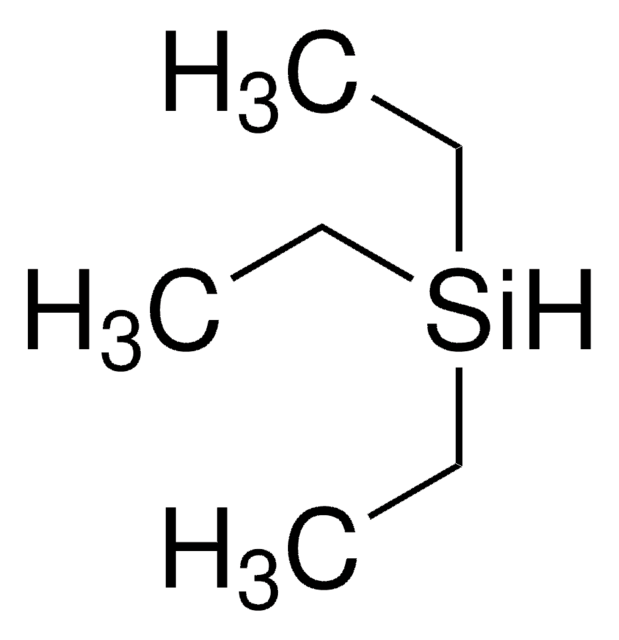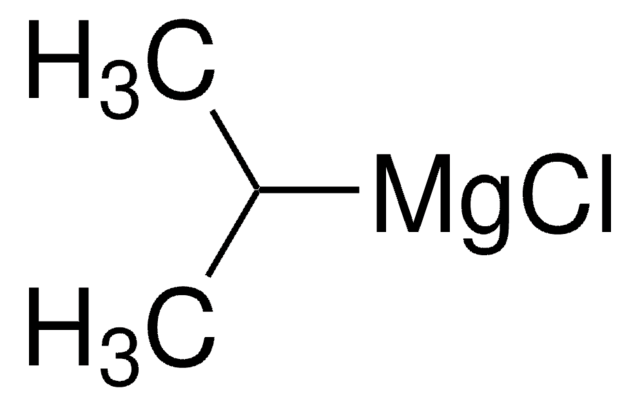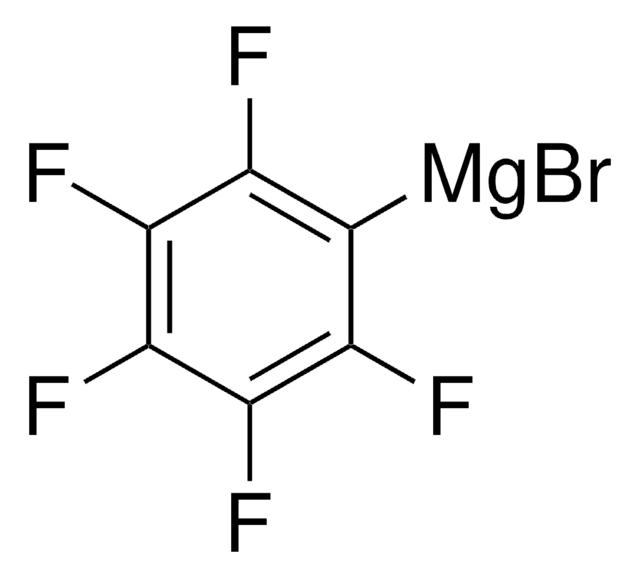442593
Tris(pentafluorophenyl)borane
95%
Synonyme(s) :
Perfluorotriphenylboron
About This Item
Produits recommandés
Niveau de qualité
Essai
95%
Forme
powder
Caractéristiques du produit alternatif plus écologique
Catalysis
Learn more about the Principles of Green Chemistry.
sustainability
Greener Alternative Product
Pf
126-131 °C (lit.)
Autre catégorie plus écologique
Chaîne SMILES
Fc1c(F)c(F)c(B(c2c(F)c(F)c(F)c(F)c2F)c3c(F)c(F)c(F)c(F)c3F)c(F)c1F
InChI
1S/C18BF15/c20-4-1(5(21)11(27)16(32)10(4)26)19(2-6(22)12(28)17(33)13(29)7(2)23)3-8(24)14(30)18(34)15(31)9(3)25
Clé InChI
OBAJXDYVZBHCGT-UHFFFAOYSA-N
Catégories apparentées
Description générale
Application
Used with tri-tert-butylphosphine (570958) to study the heterolytic cleavage of dihydrogen at room temperature and one atmosphere pressure.
Caractéristiques et avantages
À utiliser avec
Mention d'avertissement
Warning
Mentions de danger
Conseils de prudence
Classification des risques
Eye Irrit. 2 - Skin Irrit. 2 - STOT SE 3
Organes cibles
Respiratory system
Code de la classe de stockage
11 - Combustible Solids
Classe de danger pour l'eau (WGK)
WGK 3
Point d'éclair (°F)
Not applicable
Point d'éclair (°C)
Not applicable
Équipement de protection individuelle
dust mask type N95 (US), Eyeshields, Gloves
Faites votre choix parmi les versions les plus récentes :
Déjà en possession de ce produit ?
Retrouvez la documentation relative aux produits que vous avez récemment achetés dans la Bibliothèque de documents.
Les clients ont également consulté
Articles
The properties of many devices are limited by the intrinsic properties of the materials that compose them.
The properties of many devices are limited by the intrinsic properties of the materials that compose them.
Global Trade Item Number
| Référence | GTIN |
|---|---|
| 442593-100G-A | 4061841749974 |
| 442593-1G-A | 4061832282664 |
| 442593-5G-A | 4061833482704 |
Notre équipe de scientifiques dispose d'une expérience dans tous les secteurs de la recherche, notamment en sciences de la vie, science des matériaux, synthèse chimique, chromatographie, analyse et dans de nombreux autres domaines..
Contacter notre Service technique![Sodium tetrakis[3,5-bis(trifluoromethyl)phenyl]borate](/deepweb/assets/sigmaaldrich/product/structures/251/439/7a621e74-bfd1-4a43-833c-09adfcc1e0b3/640/7a621e74-bfd1-4a43-833c-09adfcc1e0b3.png)









